2012 Toyota Camry Review [Video]

The reengineered 2012 Camry is good, it just doesn’t make for a good story. You see, we understand that along with all the facts and opinions, you want to read a good piece of automotive journalism. And as journalists, we want to write it.
FAST FACTS
| 1. The 2012 Camry is the most fuel-efficient mid-size sedan on the market with a 178-hp 2.5L 4-cylinder achieving 25/35-mpg. |
| 2. SE models get 18-inch wheels, an upgraded suspension, unique bodywork, a rear spoiler, plus steering wheel-mounted paddle shifters that actually rev-match on the down-shift. |
| 3. Display Audio system is standard on most models, with Entune Apps optional. |
| 4. The Camry Hybrid gets a 12-mpg improvement in the city for a best-in-class 43/39-mpg rating and an average of 41-mpg. |
There are plenty of compelling stories out there, from an underdog like Hyundai defeating its rivals, to an “oh how the mighty have fallen” story like Consumer Reports slamming the new Civic. But no one wants to read about a winner that was expected to win all along, especially not when it’s done so nine years running.
True, the new Camry isn’t a decisive victor in the mid-size sedan category, although it does stand out in certain areas (namely the Hybrid model and overall fuel economy).
FAMILIAR SHAPE, MORE CHISELED LINES
Don’t let the somewhat subtle makeover and the fact that the car shares the identical dimensions with its predecessor fool you. The 2012 Camry is all-new. Sure the measurements are essentially the same, but there’s little carry-over, as is evidenced by the fact that it weighs anywhere from 150 to 200-lbs less than the old model – even more on the hybrid. That weight savings alone goes a long way, translating into better fuel economy, improved dynamics and reduced braking distances.
While from a profile it’s nearly identical to the outgoing model, the design changes front and back are a noted improvement, with some added angles and fewer bulbous humps. The grille now stretches out to the headlights, which gives the car a wider look and is certain to translate into a meaner looking NASCAR racer, while the chrome strakes on the side skirts add a touch of Lexus class. Overall it’s handsome, though not exactly alluring.
Get the Flash Player to see this player.
CAMRY REGAINS FUEL-ECONOMY LEAD
What isn’t new about the Camry is what’s under the hood, with last year’s 4-cylinder and V6 engines carried over. The base offering is now gone, with the 2.5-liter making 178-hp and 170 lb-ft. Thanks to the car’s lighter overall weight it does feel a bit peppier and is certainly adequate. As for fuel economy, it’s jumped considerably and Toyota can once again lay claim to leadership in this category. Rated at 22/33-mpg last year, the new Camry manages a 25/35-mpg rating. That’s identical highway mileage to the previous class-leader, the Hyundai Sonata, but represents a 3-mpg advantage in the city.
Toyota’s continued V6 offering comes as a surprise, with most automakers switching to turbo 4-cylinder engines. With 268-hp and a fuel economy rating of 21/30-mpg, it lags behind the Sonata Turbo, although there are certain rewards to be had with the V6. It’s significantly more refined and while perhaps not as much fun as the Sonata, when paired with a top-trim XLE or SE model, it’s a solid near-luxury package.
SE MODEL HARD TO RESIST
The SE V6, in particular, represents one of the strongest offerings in the Camry lineup. Included is a unique exterior with a more pointed nose and a lack of chrome detailing, plus side skirts and a rear spoiler. Also included are 15 percent stiffer springs and 50 percent tighter shocks, plus a more direct electric steering program, larger sway bars and 18-inch wheels with 225/45/18 tires that keep it solidly planed on the ground. Perhaps most surprising, however, are paddle shifters and when the transmission is popped into the “S” sport mode, it will even rev-match on the down shift. Yea, in a Camry!?
Helping SE models hit the mark is a beautiful interior, with the optional (but must-have) leather and Ultrasuede combo on the seats, plus a stitched leather dash top. It’s a perfectly matched luxury interior to compliment the quiet, smooth, well-planted and confident sedan.
The ride quality of all models is improved thanks to several small tweaks. A new suspension geometry is designed to improve handling, while also increase the car’s stability. Also helping in that area are small fins, located near the mirrors and the taillights that help use aerodynamics to keep the vehicle planed.
As for the steering, it’s been updated as well, and while relaxed, isn’t vague or numb. The chassis is less willing to tango, but then again, this is a family sedan.
LOW-GRADE WOOD, HIGH-TECH SCREEN
Inside there are some big improvements and some oversights. In the latter category is faux-wood trim on the center console that we wouldn’t wish on a 1995 Buick Le Sabre. The base trim seat materials are also in the running for worst-in-class.
The dash is decidedly more modern, even though the gauges retain much of the general design of the previous model. Doing away with dull pastel shades, the new designs have more contrast with darker darks, brighter white and metallic shades and more color. Of note, each trim gets a unique gauge cluster design.
Perhaps the single largest factor in modernizing the Camry is the new Display Audio system that’s standard on all but the entry-level L and LE Hybrid models. The 6.1-inch screen adds perceived value, sitting as a bright and modern focal point in the cabin, surrounded by surprisingly few buttons, giving the already spacious cabin a notable lack of clutter.
The entry level Display Audio system can be paired with Satellite Radio, giving access to several features, including some very useful ones like XM NavWeather, Traffic Incident Reports and XM Fuel Prices, so you can find the cheapest gas when it’s time to fill up.
Upgrade to the Entune system and you’ll have access to a host of Apps, as well as Navigation. Included in the Apps list are things like OpenTable and Movietickets.com, so you can book a restaurant or buy movie tickets, as well as iheartradio, so you can listen to different streaming radio stations from across the country.
The Entune system has its benefits and drawbacks. On the up-side, there’s no monthly fee. The reason, however, is that it uses your smartphone data plan, meaning you need a smart phone, and you’re eating up data every time you use it. On the plus side again, it is incredibly easy to use.
Along with being a touch screen, many of the features can be operated using the new Nintendo-style steering wheel controls, an evolution of the “touch tracer” design first used on the current Prius.
Apart from these added features, the new Camry’s cabin is more spacious and more comfortable. Rear seat room has been increased by cutting back on the protrusion of the center console, while the front seatbacks are sculpted to give a few extra tenths of an inch of knee space. Even the doors are slightly thinner. The driver and front passenger will appreciate a seat cushion that’s nearly an inch-longer, while the seatbacks are just over an inch taller.
This WIL (Whiplash Injury Lessening) seat is just one of many safety features on the Camry, including a “Smart Stop” brake override system, the expected stability control, traction control and tire pressure monitoring systems, plus 10 airbags. In addition, Toyota is also offering a Blind Spot Monitoring system.
CAMRY HYBRID THE BEST OF THE BUNCH
The model we’ve yet to touch on is the Camry Hybrid, which easily represents the most significant improvement over its predecessor, and for good reason. Toyota sees hybrids as the way of the future and betting that the hybrid could be competing with the 4-cylinder gasoline version for the top sales position in the not-too-distant-future, has invested heavily in preparing it to be a leader.
The previous Camry Hybrid was first eclipsed by the Fusion Hybrid and then by the Sonata Hybrid, but this latest version shows Toyota’s expertise in blending gasoline and electric technology, delivering a 43/39-mpg fuel economy rating, with an average of 41-mpg. That’s a gain of 12-mpg in the city and 7-mpg ahead of the Sonata hybrid in urban driving.
How Toyota achieved this isn’t exactly rocket science, following a change made with the third-gen Prius. That change? A larger displacement engine. Using a 2.5-liter 4-cylidner, mated to Toyota’s Hybrid Synergy Drive system it not only gets those class-leading fuel economy numbers, but delivers solid acceleration with 200-hp on tap.
There’s a lot to like about the SE model, but if you’re looking for fuel economy without compromises, it’s easy to see that the Camry Hybrid could become the daily driver of choice for the average American car buyer. That said, it’s easily the best of the new Camrys. While the Camry as a whole isn’t the clearly dominant vehicle over its rivals, the Hybrid version certainly is.
THE VERDICT
In some ways the new Camry can be likened to the new Civic. It’s no revolution, just a solid improvement on an already great car – although Toyota can at least lay claim to being a fuel economy leader. Plus, there’s that excellent hybrid model, which could be the deciding factor in helping the Camry hit the top sales goal for 10 straight years.
But Toyota’s strategy for the new Camry extends beyond all this, with an important pricing component. While no official numbers have yet to be revealed, Toyota has said that while the LE model will increase somewhat, the high-end SE and XLE trim levels will be “substantially lower”, thus slashing the gap between the top and bottom end, with a plan to bring more and more customers into the high grade trim levels.
As the best selling car in America for 9 years running, it doesn’t make for a very entertaining plot when the guy on top beats his opponents soundly yet again. If you check out numerous reviews on the car you’re unlikely to find praise being heaped on it and yet, just because it’s not a compelling underdog story, it doesn’t make the new Camry any less of a winner.
Related Reading
2010 Honda Accord Review
2011 Hyundai Sonata Review
2011 Kia Optima Review
2010 Subaru Legacy Review
2010 Ford Fusion Sport Review
LOVE IT
- Best-in-class fuel economy
- Hybrid model a winner
- Display Audio system easy to use, adds value
LEAVE IT
- Low grade fax-wood trim is sub-par
- Base fabrics leave much to be desired

With AutoGuide from its launch, Colum previously acted as Editor-in-Chief of Modified Luxury & Exotics magazine where he became a certifiable car snob driving supercars like the Koenigsegg CCX and racing down the autobahn in anything over 500 hp. He has won numerous automotive journalism awards including the Best Video Journalism Award in 2014 and 2015 from the Automotive Journalists Association of Canada (AJAC). Colum founded Geared Content Studios, VerticalScope's in-house branded content division and works to find ways to integrate brands organically into content.
More by Colum Wood

















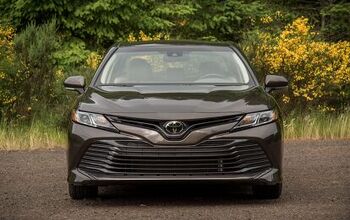

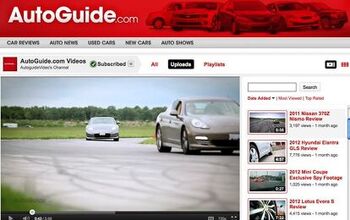



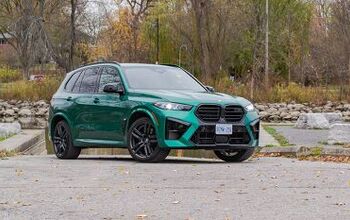
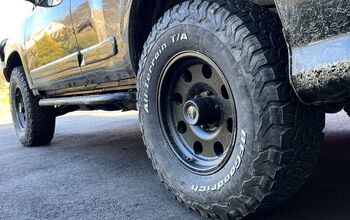

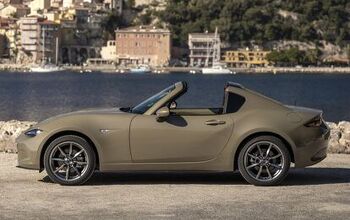

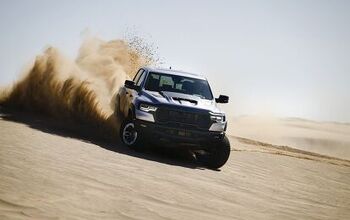


Comments
Join the conversation